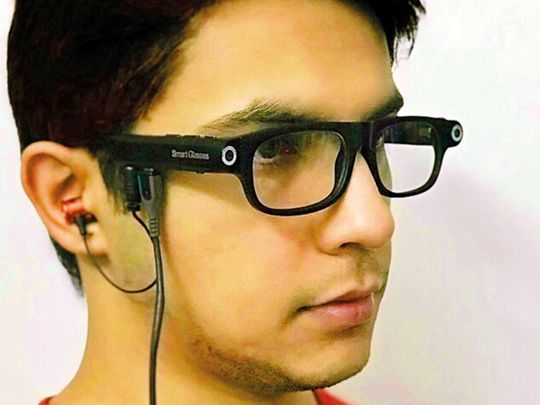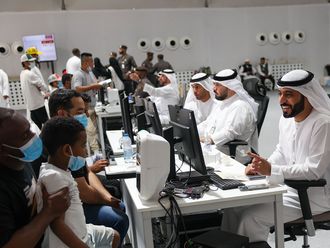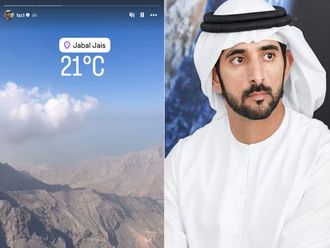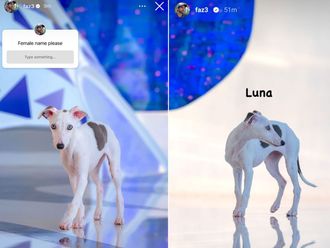
Abu Dhabi: A group of researchers at Ajman University have created smart glasses with the help of artificial intelligence (AI) technology that can read, navigate and identify faces to help the visually impaired.
“The idea behind this project was to come up with smart solutions to help the visually impaired lead normal lives, and so we focused the smart glasses on three core areas which are reading, identification and navigation — three areas where visually impaired people struggle the most,” said Pakistani scientist Tazeen Sharif, director of International Academic Affairs and one of the lead researchers on the project.
“The whole system is composed of a pair of smart glasses and a smartphone that are interlinked with a processing unit. All of the smart glasses features are accessible through the smart phone device. The user basically chooses what programme they want to use — for example reading — and can access it with their smart phone. The user also does not need an internet connection for this to work,” she added.
“If the person wants to use the reading feature, the smart glasses are able to read and identify the words on the piece of paper or a signboard in real time with an accuracy of 95 per cent, and so it basically works like an audio book transmitting the words to the person,” she said.
The whole system is composed of a pair of smart glasses and a smartphone that are interlinked with a processing unit.
Sharif said the smart glasses currently use four languages including English and Arabic, with plans on expanding its language scope to include several more.
Commenting on the other innovative features such as the facial recognition system, Sharif said the smart glasses can store and remember faces through its cloud system.
“Social inclusion was a big part of why we developed this feature. A lot of visually impaired people often struggle when it comes to identifying people, and so we made the facial recognition tool that allows them to identify familiar faces.
“The smart glasses store the facial images of people in its cloud system, and so as soon the user runs into that person again — say it’s a friend or family member — the smart glasses accesses its cloud and is able to recognise who that person is in real time, and in turn the visually impaired person is informed by the smart glasses,” she added.
Sharif said the smart glasses can not only identify people but also objects as well.
“Just like facial recognition, the smart glasses can also identify any objects. This is to give visually impaired people more special awareness of their surroundings, and so they can now identify things such as chairs, tables or a bed,” she explained.
“This will be a very useful tool for them say when they go to a hotel room which is a completely new setting for them,” she added.
The group of engineers even created a navigation system with the smart glasses.
“When we were building our prototypes we got a lot of feedback from visually impaired people and one of the most important concerns for them was indoor navigation. They wanted to be able to move around places just like everyone else.
“So along with the smart glasses, we created a small transmitting device that can be installed in any certain place — in the kitchen for example — which can be tracked and located by the smart glasses.
“The smart glasses will tell the user by audible commands on how to reach that spot, it will tell them to move straight, to turn left and also how many steps they should take until they reach their location,” she added.
“Along with placing these transmitting devices in homes, our main goal is to see them placed in public areas like shopping malls, metro stations and universities,” she said.
Sharif says the plan is to have the smart glasses available sometime next year, with all of its prototypes having already been tested successfully on several individuals.
“The feedback we have received has been very good so far and so we’re hoping to have this officially ready next year. Until now we have managed to reach an accuracy of over 95 per cent when it comes to all of the features.”












